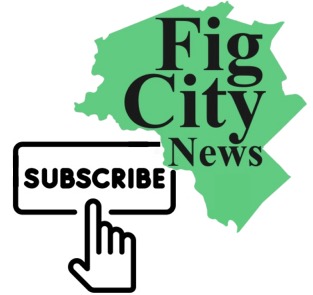On January 6, 2002, the Boston Globe’s special reporting unit for investigative and accountability journalism, Spotlight, published the first of two articles. The series began with the story of Father John Geoghan, a Catholic priest in the Greater Boston Area who was accused of sexually abusing over 130 boys and raping at least some of them during his 30-year career. A second article later moved into the Church’s — more specifically Cardinal Bernard Francis Law’s — knowledge of this behavior and lack of inflicted punishment and accountability. After their initial investigation, Spotlight discovered that this was not the first or only instance of sub-rosa sexual crimes within the Catholic church.
Thirteen years after the story broke, the biographical drama Spotlight directed by Tom McCarthy brought the story to Hollywood in a film that received a total of 71 awards amid 138 accolades.
I’ve watched it. It’s very good.
…
Excitedly, I exclaimed, “No way!”
Unbeknownst to many, one of my responsibilities as the co-Editor-in-Chief of The Lion’s Roar newspaper is to distribute stacks of our newest issue to various public locations around the city. I wouldn’t take issue if my title were to change to “papergirl.”
Two weeks ago, while I was doing my rounds, I met Kathleen Hennrikus, a librarian at the Newton Free Library who, after discovering my interest in journalism, told me that before becoming a librarian, she was a researcher for the Boston Globe and was part of the Spotlight team that investigated the story of sexual abuse within the Roman Catholic Archdiocese of Boston.
Hence, my opening dialogue to this story.
I sat down with Hennrikus about a week later to talk about her experience working for the Globe and how she got her start working in research. Although we met at 10AM, my recorder didn’t start until 10:20AM, leaving us 40 minutes until she had to return to the shelves.
A Newtonite from the start, Hennrikus attended Antioch University – New England and began her career at the Harvard University Medical School library, Countway. She later found positions working at Bentley University, a biotech firm, and then later as a fact checker for Boston Magazine, her introduction to journalism.
“We would write in different colors, I would write in red for a fact-check change, and if there was any concern, among me, the editor, and the reporter, if we thought legal had to see it, we would send it to legal and they would make changes in blue,” she said. “Their changes were not, ‘You can absolutely not say this,’ it was ‘You can say this,’ and they were writers as well, so they could finesse [it]. This was my first introduction to people being able to change what would be libel into getting their point across and not be libel.”
From there, she began to work in a Globe library, before software programs such as LexisNexis changed the way research was conducted within companies, and later moved to the graphics department, writing the text within infographics and maps. There, she said she began to get involved in the Spotlight team.
“Walter Robinson said [he] knew me from the library and had asked me to do a couple of things — short things that were for Spotlight but not the priest abuse — and then I moved into the newsroom, and he talked to the editor, Marty Baron, about using me for Spotlight for various things,” she said. “Spotlight had a full time researcher — actually the first researcher was Joan Vennochi, who has a column today and was a business reporter for a while – but Robbie wanted to keep the circle small enough in Spotlight so that if I had moved my lock, stock and barrel down to the Spotlight office, it would have been noticed. So I stayed.”
Soon after, she began to work on the Geoghan case, where she said she, along with the rest of the team, didn’t know that the story would explode the way that it did.
“The Spotlight team … had the idea it was going to be a bombshell, they had no idea it was going to be a good bombshell,” she said. “Once the dam broke, they got more interviews with more people than they ever thought possible, then they ever thought what was out there. So them doing all the work and writing it in such a way as to say, ‘This is what happened,’ let more people call them and say, “Me too.” … The idea that there were so many is both terrifying and uplifting.
Hennrikus’ research allowed the team to thread together the nuances of the story, one of which being the relationship between afflicted individuals and later reports of their substance abuse, a projected response to the trauma. This discovery, Hennrikus said, contributed to the larger movement of empathy toward addiction-afflicted individuals.
“In the beginning, many victims were drug addicts and alcoholics, and it took a long time for [us] to get from, ‘They’re drug addicts and alcoholics because this is what happened to them,’ not, ‘They can’t be trusted because they’re drug addicts,’” she said, “They’re masking pain, they’re masking trauma, and I think that was the first sort of turn into people of getting better about addiction.”
After the release of the story and sharing the team’s award of the Pulitzer Gold Medal for Public Service in 2003, Hennrikus left the Globe, accepting the buyout offer in 2008 and hoping to find other work as a writer. Alas, the times marked both a difficult period for the world’s economic health, and also within the field of journalism, where cuts ever since that period made an impact that can still be felt today. From there, she took her position at the Newton Free Library and has been working there since.
“I have a pension from the Globe and I [will] have a pension here, so the long game was sort of what I was looking at,” she said. “I’m sorry that I couldn’t still work in journalism, I couldn’t still work in being a writer, because I love it, but there was just nothing happening … So that’s how I started back in libraries.”
Bella Ishanyan is a senior at Newton South High School, Co-editor-in-Chief of the Newton South Lion’s Roar, and a Fig City News summer intern.







